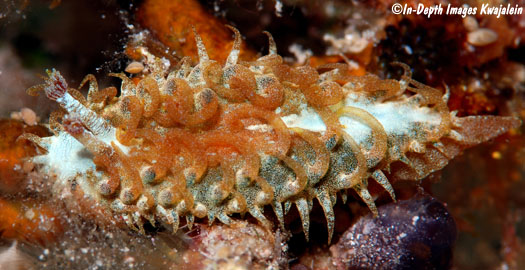
This appears to be Madrella ferruginosa. Many specimens have been found at Kwajalein Atoll, all on the leeward lagoon reef. All were on or very near clumps of Halimeda algae upon which their food, a dark brown to black species of bryozoan (Petraliella magna), was growing. Specimens ranged from about 10 to 20mm in length. They are most easily found by putting one's hand into the algae and shaking a bit. If specimens of Madrella are in there, they will often give off a yellow-orange fluid that forms a cloud around the disturbed Halimeda clump. The fluid is probably some kind of defensive secretion and is apparently picked up from the prey bryozoan. If a colony of the encrusting bryozoan is broken or crushed, it gives off the same yellow-orange color. The population of this species at Kwajalein varies considerably from time to time. When we first started searching the Halimeda patches, we found many specimens. A year later, none could be found in the same areas, although there were still healthy numbers in another Halimeda patch on a sand spit several kilometers away. Now (September 2009) even those seem to have diminished in number, although there are still some there.

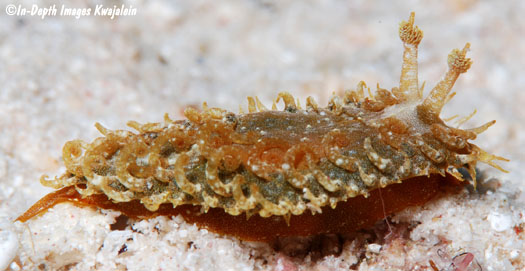
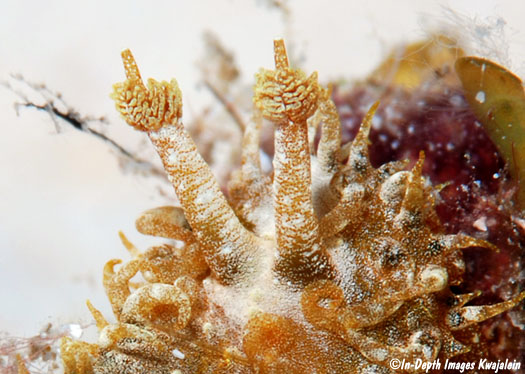
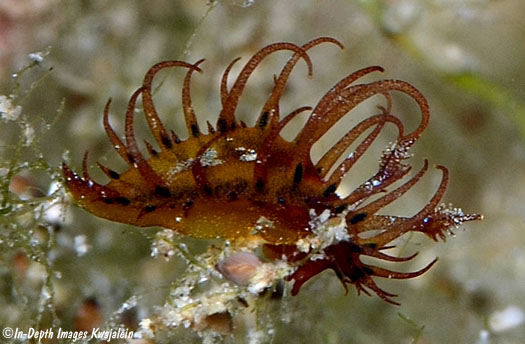
Some individuals have more greenish coloration than others.
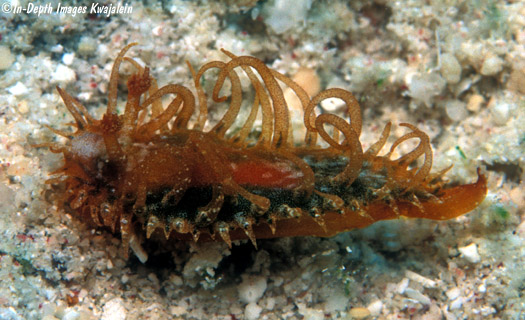
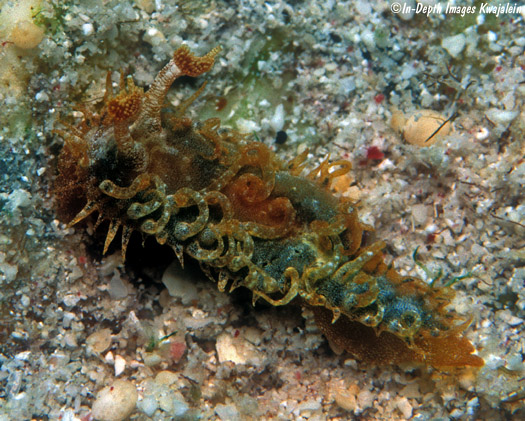
The next two photos show Madrella on its dark-colored prey bryozoan Petraliella magna.
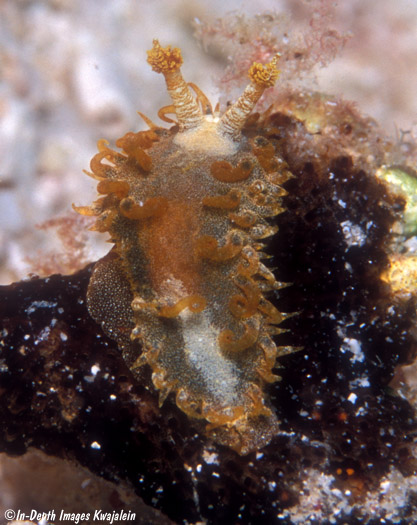
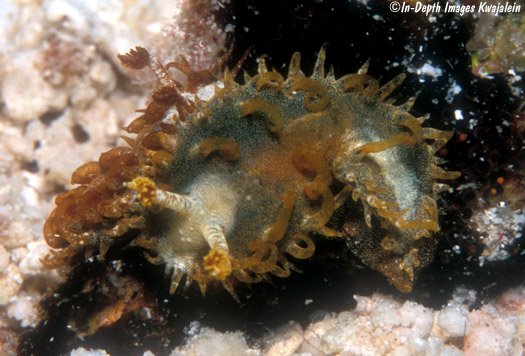
Below is an egg mass from Madrella ferruginosa.
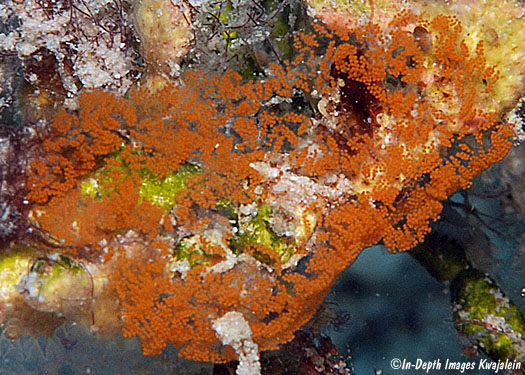
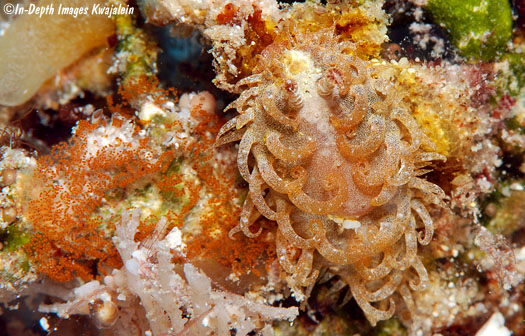
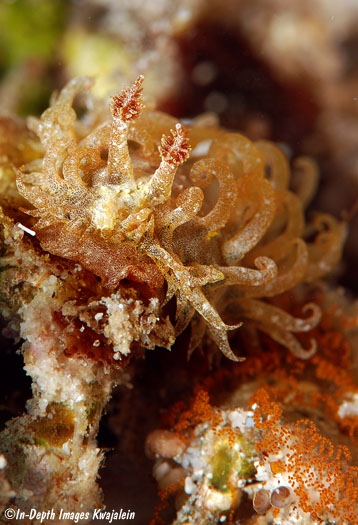
The two photos below show the same animal, first undisturbed and second after it was lightly touched. The disturbance caused it to release a yellow-orange fluid, probably a defensive secretion.
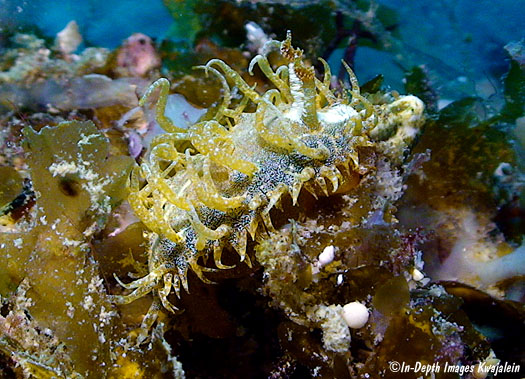
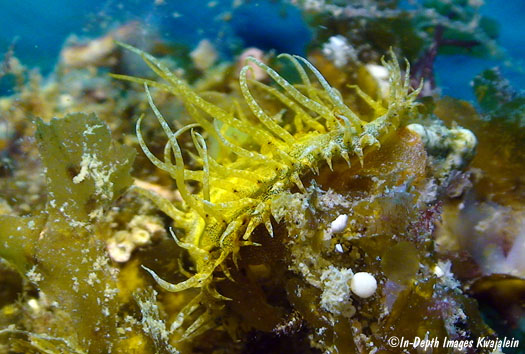
The photo below shows the danger of assuming relationship by proximity. This Madrella was found on its dark colored prey bryozoan next to an orange egg mass that was certainly not its own. We see this egg mass occasionally in the Halimeda patches and believe it is produced by a dorid nudibranch.
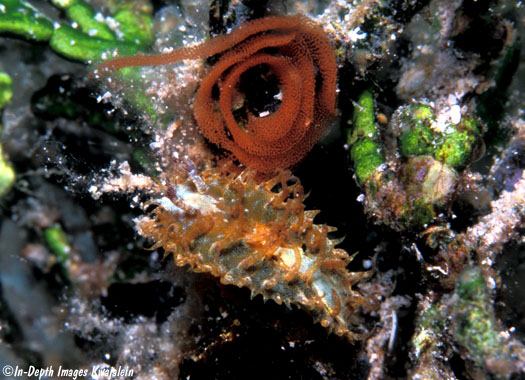
From the North Loi sandspit at night.
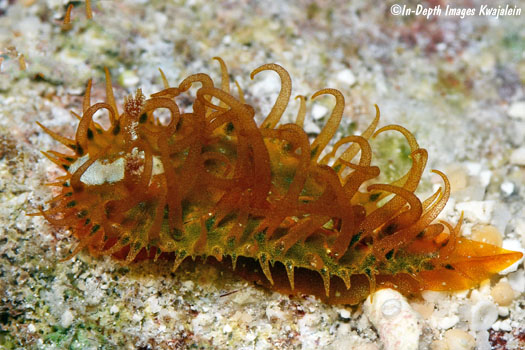
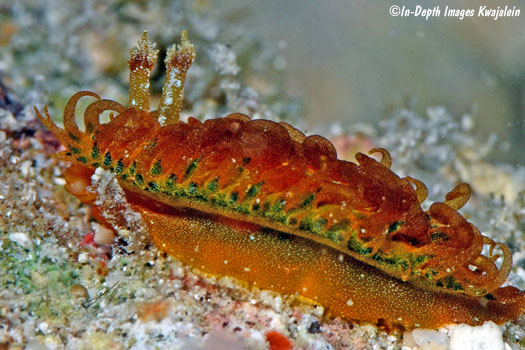
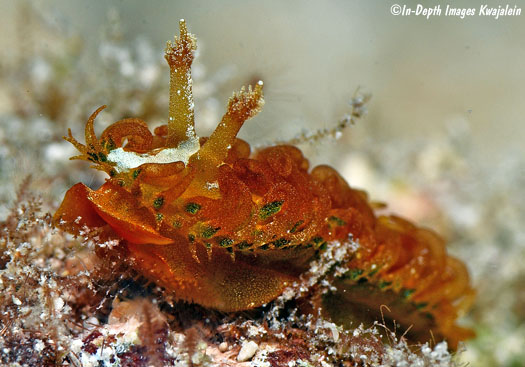
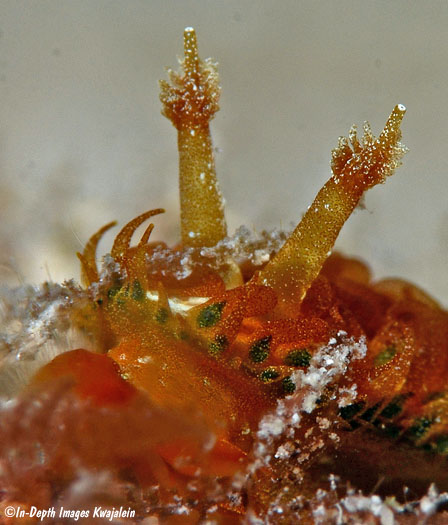
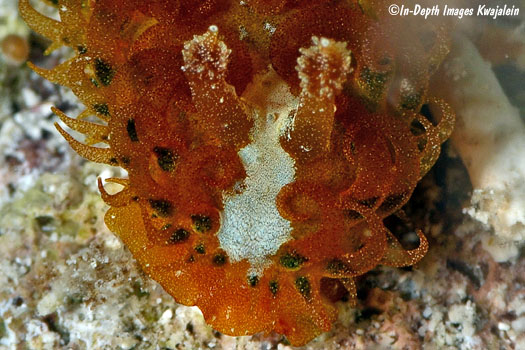
Created 20 January 2007
Updated 18 February 2021